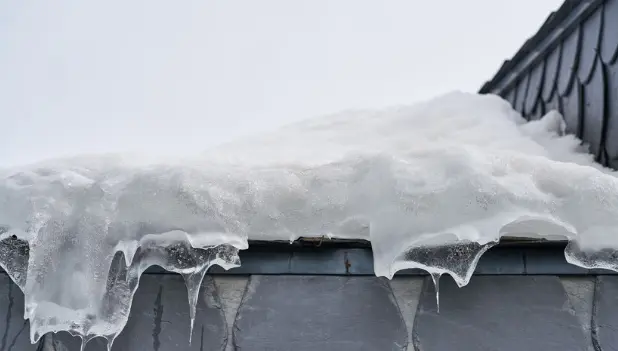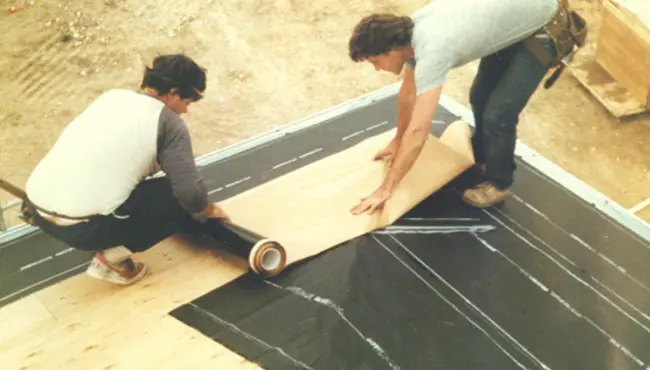The aesthetics and performance of a building depend tremendously on adequate balcony waterproofing. Heavy rain may pool due to inadequate balcony waterproofing systems potentially leaking to the lower floor, causing cracks, chips, and unsafe joints and sealants. Therefore, the best-suited terrace waterproofing system pays particular attention to the critical leakage points of the balcony or terrace.
Read on for more on waterproofing solutions for a terrace, emphasizing how to waterproof a balcony floor.

Image Credit: PxFuel.com
Before You Waterproof a Terrace Flooring
In new construction, the best balcony flooring waterproof system includes a drainage membrane on the underside of the substrate. However, when remodeling, the specific conditions of the terrace or balcony determine the best solution for waterproofing a patio, balcony, veranda, or lanai floor.
How to Choose the Best Waterproofing Solution for Existing Balconies
The best way for you to waterproof an existing balcony floor depends on the condition of the floor and substrate as well as adequate sloping.
Before choosing your balcony waterproofing solution, first, check the flooring for cracks or holes. If present, remove the finished floor layer (usually wood, plastic, stone, or composite tiles) and check the substrate (typically wood or concrete) for damage. Make sure the balcony has a slope of at least 2 percent (1/4 inch per foot) for positive drainage.
Waterproofing Floors and Substrates in Excellent Condition
For balcony floors without cracks or tenting, you can quickly and easily apply flooring-specific liquid membrane waterproofing to the finished floor with rollers or brushes. Following the manufacturer’s instructions, the process should leave no gaps, creating a thickness of just a few millimeters. The liquid membrane waterproofing solution you select should resist temperature changes, bad weather, chemical substances, and stagnant water.
Waterproofing Damaged Finished Flooring or Substrate
Cracks, rust stains, salt stains, or discoloration on the flooring indicate problems with your terrace or balcony floor. When this occurs, you will need to completely remove the finished flooring, exposing the layer beneath the substrate — the last line of defense between the vital structural parts of the balcony floor and moisture.
For concrete substrates, look for any cracks or chips, filling the ones you find. For large damaged pieces of the concrete substrate, use a concrete patcher with a trowel to apply and smooth the new concrete. Before applying the adhesive membrane, ensure a clean, dust-free, smooth, and dry substrate.
How to Seal a Balcony Floor
After repairing and cleaning the substrate, you can apply the waterproof terrace coating, followed by a primer (use a new paint roller).
Best Option for Waterproofing a Terrace or Balcony Floor
Manufacturers typically offer two solutions for the best balcony waterproofing membrane: wet/liquid and rolled/sheet membranes. However, the success of terrace waterproofing work depends on following manufacturers’ instructions.
Wet Waterproofing Membrane
Wet or liquid membranes are a cost-effective method of concrete balcony waterproofing. However, many find the application of liquid membranes complex and less effective at creating an even surface than rolled waterproofing membranes, so it may not be the best waterproofing chemical for a terrace.
Why Rolled Waterproofing Membranes Are the Best Option for Waterproofing a Balcony

Rolled or sheet membranes come in long, adhesive sheets you lay across the subfloor. They guarantee an even surface, acting as a layer of reinforcement for the subfloor. Rolled or sheet membranes type installs easier and faster than liquid membranes. Polyguard is a superior option to a rolled waterproofing membrane, Balconyguard™ Membrane, along with our high-performing companion products.
Balconyguard™ Membrane — The Best Rolled Waterproofing Membrane
Polyguard’s Balconyguard™ Membrane is a 60-mil, self-adhesive waterproofing membrane that is explicitly used on wood deck balconies and terraces, covered with lightweight concrete – ideal for multi-family construction or any project with a large number of balconies or patios.
Easy to install, Balconyguard™ Membranes provide several impressive features and benefits specially designed for waterproofing balconies and exposed multi-story walkways covered with lightweight concrete:
- Treated removable release film
- High strength PET film
- Tensile strength meets ASTM D412
- Elongation meets ASTM D412
- For ease of installation and detailing, our Balconyguard™ System includes custom corner boots, saving builders time and money.
- 48-inch wide by 50-feet rolls (200 ft2 rolls), reducing seam occurrence by up to 25 percent, compared to 36-inch wide products — a time-saving feature that lessens the number of required seams.
Before installing Balconyguard™ Membrane, we recommend you contact either Polyguard Technical Services or an authorized company representative for assistance for job-specific details or shop drawings.
Guaranteeing a Waterproof Balcony and Terrace with Polyguard Companion Products

In addition, Polyguard offers several convenient companion products to help ensure a water-tight balcony or terrace.
Polyguard 105 Flashing
Polyguard 105 Flashing deflects water along with the exterior flashing application, including the sills, spandrel beams, copings, window and door headers, and flange flashings. Our 105 flashing provides:
- A 105 mil
- Strong, flexible, self-adhesive sheet
- A high-density polyethylene film bonded to a layer of rubberized asphalt waterproofing compound with a slit release sheet to conform to 90-degree angles
- Accommodates most job site conditions without cracking, unlike some metal systems
- Stands up to abuse by other trades during and after installation
- Securely clings to the surface, eliminating blow-off and tears before and after exterior wall installation
- Helps to self-seal a punctured membrane
Before applying Polyguard 105 Flashing, eliminate sharp protrusions and clean all surfaces of dirt, dust, and foreign matters. Next, prime the dry surfaces with 650 LT Liquid Adhesive, at an average rate of 250-300 ft2./gallon by brush or roller. After adhesive becomes tacky to the touch (30 to 60 minutes), apply the 105 Flashing Membranes to all areas requiring flashing to channel water away from walls. For extra protection, extend the vertical termination on substrate 6-inches and seal on the day of installation with Detail Sealant PW™. Finally, overlap all the flashings at least 2-inches, running them parallel to the direction of water flow. Prime the overlaps if temperatures are below 40º F (4º C).
Polyguard 650 LT Liquid Adhesive
Polyguard’s rubber-based 650 LT Liquid Adhesive (in a solvent solution) primes structural concrete, masonry, or wood surfaces before applying waterproofing membranes, creating superior adhesion for the Polyguard® waterproofing membranes
- You can use 650 LT Liquid Adhesive on applications down to 25° F (-4° C).
- You must take precautions when applying 650 LT Liquid Adhesive to horizontal surfaces since it may remain tacky.
- Concrete block and brick walls require 650 LT Liquid Adhesive.
Polyguard 650 WB Liquid Adhesive
Rubber- and water-based 650 WB Liquid Adhesive provides excellent adhesion. The VOC content of 5 g/L. 650 WB Liquid Adhesive appears pink. When used to prime dry surfaces, the 650 WB Liquid Adhesive ensures the dust-free substrate required for applying Polyguard Waterproofing Membranes.
- Use 650 WB Liquid Adhesive to prime vertical and horizontal surfaces of structural concrete, masonry, or wood surfaces before applying Polyguard Membranes.
- You can use 650 WB Liquid Adhesive in ambient temperatures and surface temperatures of 40° F (5° C) and above.
- Do not freeze 650 WB Liquid Adhesive during transit, storage, or use.
- Use 650 WB Liquid Adhesive on all concrete blocks and brick walls.
Polyguard Balconyguard™ Outside Corner Boot
The Balconyguard™ Outside Corner Boot (a 60-mil combination of rubberized asphalt and polyethylene) simply applies to the outside face of the balcony at the wall-balcony interface. Only apply Balconyguard Membrane or 650 PRM and 650 Sheet Membrane over the clean, dry, contaminate-free film of a Balconyguard™ Outside C. The 6-inch x 6-inch x 6-inch easy-to-install boots come 25 to a carton. Easy to install, the Balconyguard™ Outside Corner Boot saves time and labor on the job site.
Polyguard Detail Sealant PW™
High-performing, flexible, non-corrosive, and non-staining Polyguard Detail Sealant PW™ fills minor cast concrete cracks, concrete masonry cracks, penetrations, gypsum sheathing joints, and gaps at head joints, creating a continuous smooth surface. You can apply Polyguard Detail Sealant PW™ to many below-grade waterproofing applications at penetrations and terminations, along with trowel-on rough opening flashing/waterproofing above-grade applications.
- VOC/HAPS free, non-isocyanate adhesive/sealant, solvent-free Polyguard Detail Sealant PW™ is an eco-friendly solution to toxic silicone, urethane, and polyurethane sealants.
- Polyguard Detail Sealant PW™ comes in easy-to-use three-gallon pails or 20 oz. sausages.
- Even at low temperatures, Polyguard Detail Sealant PW™ cures rapidly and retains its properties to -75°F.
Polyguard Detail Tape
Apply the Polyguard Detail Tape as detail strips on the outside and inside corners, expansion joints, penetrations control joints, and cold joints to patch damaged areas of the membrane.
Strong, flexible, self-adhesive sheet Polyguard Detail Tape consists of a cross-laminated, high-density polyethylene film bonded to a layer of rubberized asphalt waterproofing compound. Wind the tape on a disposable silicone treated release sheet to stop the membrane from sticking to itself while in the roll.
Polyguard LM-85 SSL
Polyguard LM-85 SSL is a two-component, semi-self-leveling, asphalt-modified, urethane liquid membrane that comes in a pourable sealer and is specifically made to be used in conjunction with Polyguard waterproofing membrane in Dual Core and pitch pan applications.
- 100% Polyguard LM-85 SSL contains no solvents
Polyguard LM-85 SSL remains UV stable up to three months
Polyguard Polyflow® BD
Polyguard Polyflow® BD (balcony drain) protection and drainage system provides drainage for foot-traffic balcony decks with less than 3-inches of concrete. Polyflow® BD comes as a sheet-molded drain, establishing pathways for balcony water management. The fabric permits water flow to designated drainage exits. In addition, the punched core increases the release rate of water from within the system.
For horizontal deck installation, unroll Polyflow® BD fabric side up and loosely lay directly over the balcony waterproofing membrane, with the edges of the flanged core at the higher side of the deck or plaza, away from any drains.
Polyguard Polyflow® 18 Drainage Mat
Polyguard Polyflow® 18 Drainage Mat includes a two-part, molded-sheet drainage geocomposite with a formed impermeable polymeric core, covered on one side with high-strength woven filter fabric. Lightweight and easy to install, Polyguard Polyflow® 18 Drainage Mat contributes to waterproofing by allowing water to pass through the fabric into the drain core while restricting the movement of soil particles that might clog the core. From the core, the water flows to designated drainage exits. As a result, Polyguard Polyflow® 18 Drainage Mat is an ideal drainage mat for split slabs, plazas, and parking decks.
- Polyguard Polyflow® 18 Drainage Mat provides enhanced compressive strength (21,000 PSF) of the core.
- Use Polyguard Polyflow® 18 Drainage Mat for horizontal applications
Installing the Polyguard Polyflow® 18 Drainage Mat
After cleaning the horizontal substrate surface of dust and debris, unroll the Polyflow® 18 fabric side up and loosely lay directly over the waterproofing membrane, with the edges of the flanged core at the higher side of the deck or plaza, away from any drains. Next, attach the horizontal Polyflow 18 to the substrate surface with an adhesive compatible with the waterproofing membrane substrate.
At the overlaps, place adjoining panels, so the core flange overlaps and shingles in the direction of flow to the drain collection system, daylight, or scuppers. Push adjoining panels together and shingle one fabric over another. For an under-slab installation condition, place the Polyflow® 18 fabric side down towards the soil.
Why You Need to Waterproof Your Balconies with Balconyguard™ Membrane
Sufficient waterproofing of your balconies will help preserve the durability and aesthetics of your building, significantly lessening maintenance and repair bills over time. A leaky terrace can lead to long-term structural damage and unhealthy living conditions. Fortunately, Polygaurd’s Balconyguard™ Membrane and companion products can help you with your balcony waterproofing needs, securing your building’s value and integrity for years to come.
For more questions on the best options for waterproofing a balcony or a terrace, don’t hesitate to contact Polyguards professionals today.













